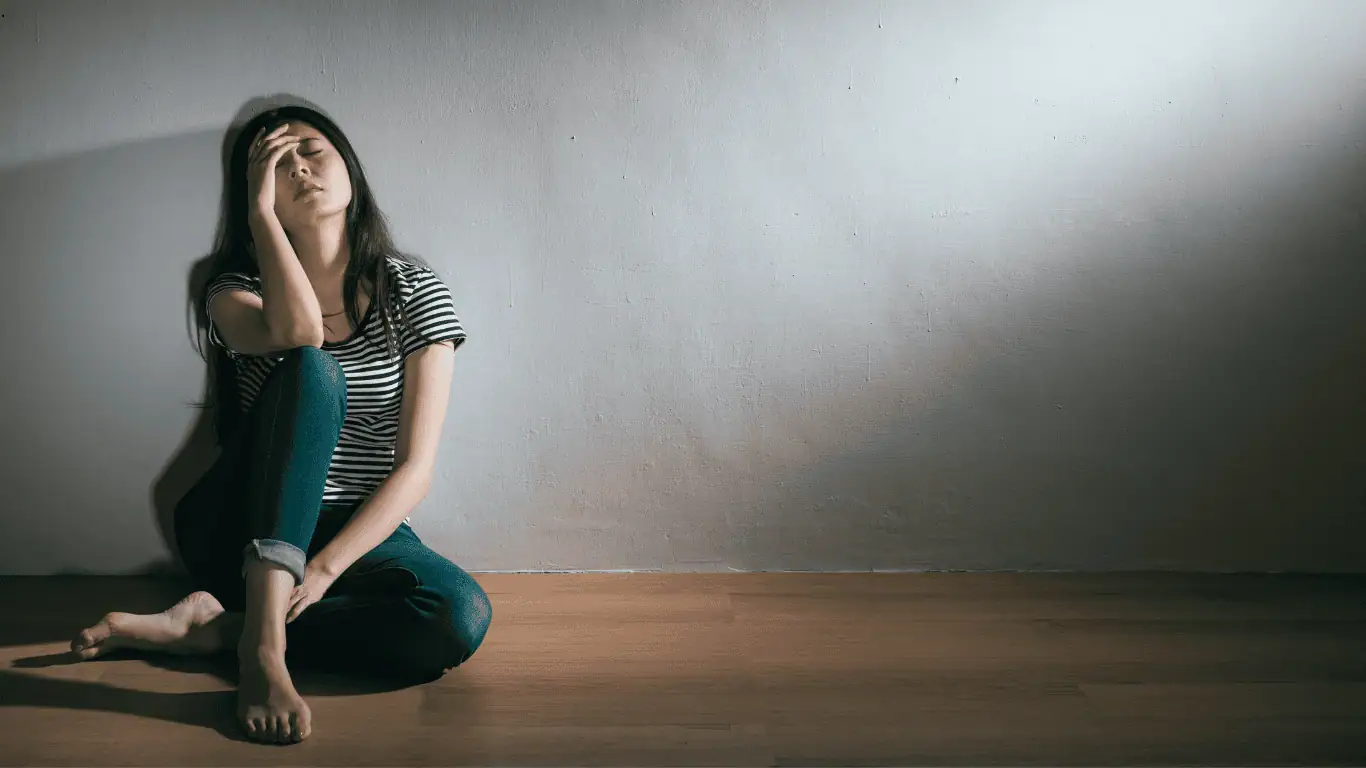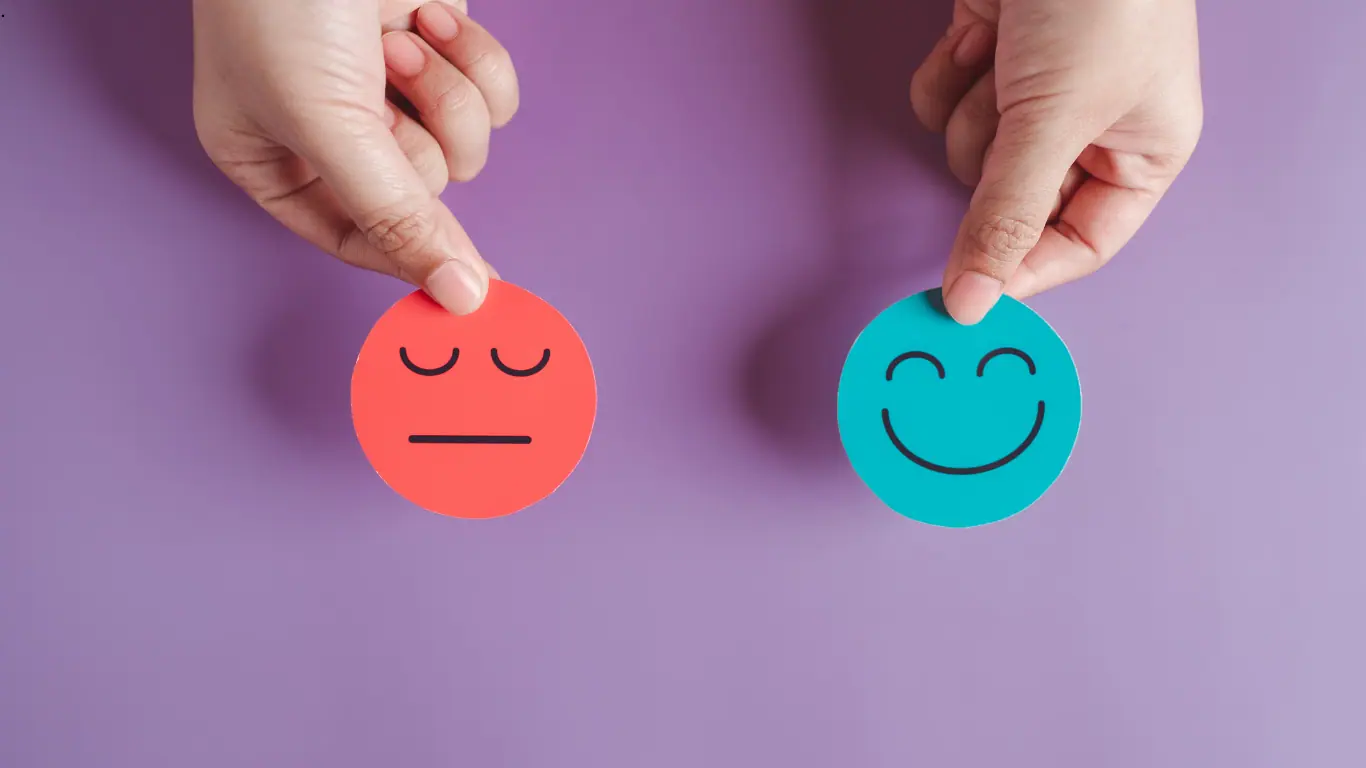So, What is Bipolar Disorder Anyway?
Classified under mood disorders by the American Psychiatric Association (APA) in the Diagnostic and Statistical Manual of Mental Disorders (DSM-5), bipolar disorder affects approximately 1% of the global population. Yet many cases remain undiagnosed or misdiagnosed, often mistaken for major depression or personality disorders, leading to delays in proper care.
At Right Path Rehab, we specialize in helping individuals navigate the complexities of bipolar disorder, offering evidence-based support for both manic episodes and the often-overlooked struggles of bipolar depression. Our compassionate, personalized approach empowers individuals to manage their symptoms better, rebuild stability, and move toward long-term emotional health.
Many patients with bipolar disorder experience periods of emotional stability between episodes, while others may face rapid cycling between manic and depressive symptoms. One of the most challenging aspects of this condition is bipolar depression, which can be more debilitating and longer-lasting than manic phases—and often resists conventional antidepressant treatments. Having access to specialized, informed care makes all the difference.
Types of Bipolar Disorder
Bipolar disorder is not a one-size-fits-all diagnosis. It exists across a spectrum, and the experience of mood episodes, depressive symptoms, and energy shifts can vary widely from person to person.
Understanding the different types of bipolar mood disorder is an important step toward finding the right treatment approach—and building lasting stability with the support of experienced mental health professionals.
Bipolar I Disorder
Bipolar I disorder is defined by the presence of at least one full manic episode, often accompanied by episodes of severe depression. During a manic episode, individuals may experience a surge of energy, racing thoughts, impulsive decision-making, and, in some cases, psychotic symptoms such as hallucinations or delusions.
Periods of depressive symptoms are also common, characterized by profound sadness, loss of interest, fatigue, and hopelessness. These intense swings between mania and depression—sometimes called manic depression—can cause significant disruptions to work, relationships, and daily functioning. Mood stabilizers are often prescribed early in treatment to help manage both poles of the illness and prevent escalation during an acute episode.
Bipolar II Disorder
Bipolar II disorder involves a different pattern of symptoms. Instead of full-blown mania, individuals experience hypomanic episodes—periods of elevated mood and increased activity that are less extreme but still disruptive. These episodes may present with heightened energy, irritable mood, and impulsivity, but do not typically include psychotic symptoms.
The depressive side of bipolar II disorder, however, tends to be more persistent and impairing. Extended depressive episodes can mirror or exceed the severity seen in major depressive disorder, significantly impacting quality of life. Long-term management often includes mood stabilizers, psychotherapy, and specialized interventions like Interpersonal and Social Rhythm Therapy (IPSRT) to maintain balance and routine.
Cyclothymic Disorder
Cyclothymic disorder is a milder form of bipolar disorder, characterized by frequent mood swings that fluctuate between hypomanic symptoms and mild depressive symptoms. Although the mood changes are less severe than in Bipolar I or II, they can still cause emotional instability and disrupt daily life.
Over time, if untreated, cyclothymia may evolve into more defined forms of bipolar disorder. Early intervention with therapy and lifestyle adjustments is key to promoting long-term emotional health.
Rapid Cycling Bipolar Disorder
Some individuals experience rapid cycling bipolar disorder, where manic episodes, hypomanic episodes, and depressive episodes occur four or more times in a single year. Rapid cycling can make symptoms more unpredictable and harder to treat, often requiring close monitoring, medication adjustments, and integrated therapeutic support.

Understanding Symptoms and Mood Episodes in Bipolar Disorder
Bipolar disorder isn’t just about having “good days” and “bad days.” It’s a serious mental health condition that involves dramatic shifts in mood, energy, and behavior, known as mood episodes.
Whether you’re living with Bipolar I disorder, Bipolar II disorder, or another variation, understanding these mood symptoms is key to finding the right support—and starting the healing process.
Depressive Episodes
A depressive episode in bipolar disorder can feel overwhelming and all-consuming. During these periods, individuals often experience:
- Persistent sadness or emotional emptiness
- Fatigue, disrupted sleep, and changes in appetite
- Feelings of guilt, hopelessness, or worthlessness
- Difficulty concentrating or making decisions
- Suicidal thoughts or behaviors in more severe cases
While these symptoms can look similar to major depression, what sets bipolar depression apart is its pattern—it’s part of a broader cycle that includes manic and hypomanic episodes. Recognizing this difference is critical in treating bipolar disorder correctly.
Manic Episodes
Manic episodes represent the opposite extreme—periods of intense energy and elevated mood that can escalate quickly. Symptoms may include:
- Euphoria or inflated self-esteem
- Racing thoughts, rapid speech, and impulsive decisions
- Decreased need for sleep without feeling tired
- Heightened irritability or agitation
- Risk-taking behaviors or, in some cases, psychosis (delusions or hallucinations)
Because manic episodes can be dangerous—both emotionally and physically—early intervention and mood stabilizing medication are often necessary to prevent harm.
Hypomanic Episodes
Hypomanic episodes share some features of full mania but are less severe. Individuals may seem energetic, overly cheerful, or more productive than usual. But even though hypomania may feel positive at first, it can still strain relationships, impair judgment, and, if left untreated, escalate into full mania or trigger a depressive episode.
Acute Mania
Acute manic episodes are intense and often unpredictable, marked by extreme mood elevation, impulsive behavior, and, in some cases, delusions or hallucinations. Because manic episodes can quickly become dangerous—both emotionally and physically—early intervention is crucial. The most effective treatment typically includes mood-stabilizing medications and close psychiatric monitoring to reduce risk and promote long-term stability.

How Is Bipolar Disorder Treated?
At Right Path Rehab, we approach bipolar disorder treatment as a long-term journey—focused not just on symptom management, but on empowering individuals to reclaim stability, emotional wellness, and a fulfilling life.
Successful treatment typically includes a combination of mood stabilizing medication, targeted therapy, education, lifestyle support, and when necessary, more intensive interventions. No two paths are exactly the same, which is why we tailor each plan to fit the needs, goals, and strengths of the individual.
Medication Treatment: Building Stability
Medications often form the foundation of effective treatment, especially during the acute phase when mood symptoms are most severe. Common medication strategies include:
- Mood stabilizing medications like lithium or valproic acid, which help control both manic episodes and bipolar depression.
- Antipsychotic medications to manage severe manic episodes or psychotic symptoms such as hallucinations or delusions.
- Selective serotonin reuptake inhibitors (SSRIs), prescribed cautiously for depressive episodes, always alongside a mood stabilizer to avoid triggering mania.
Finding the right medication—or combination of medications—requires careful collaboration with experienced mental health professionals, and regular adjustments may be needed over time. Addressing related disorders such as anxiety, PTSD, or substance use disorders can also play an important role in creating lasting stability.
Cognitive Behavioral Therapy (CBT)
CBT is one of the most effective tools we use to help individuals manage acute depression related to bipolar disorder. This structured, goal-oriented therapy helps clients identify and reframe negative thought patterns, develop healthier coping strategies, and recognize early warning signs of depressive or manic episodes. At Right Path Rehab, we use CBT to support emotional regulation, improve mood stability, and increase day-to-day functionality.
Dialectical Behavior Therapy (DBT)
Originally developed for individuals with intense emotional dysregulation, DBT has proven to be highly effective for those with bipolar spectrum disorders—especially when a depressive episode is accompanied by irritability, anxiety, or impulsive behaviors. DBT combines mindfulness techniques with skills in emotional regulation, distress tolerance, and interpersonal effectiveness. It’s especially helpful for building resilience and learning how to manage overwhelming emotions without falling into harmful patterns.
Family-Focused Therapy (FFT)
Mental health conditions like bipolar disorder don’t just affect the individual—they impact the entire family system. Family-focused therapy brings loved ones into the treatment process, helping to create a supportive environment for recovery. Through FFT, families learn how to communicate more effectively, manage stress together, and identify early warning signs of relapse. This type of therapy can reduce conflict, strengthen relationships, and improve overall treatment outcomes.

Acute Care Options for Severe Mood Episodes
Sometimes, despite proactive care, mood shifts can become overwhelming. When individuals experience acute mania, acute depression, suicidal ideation, or rapid cycling, immediate intervention is critical.
In these cases, Electroconvulsive Therapy (ECT) may be recommended. ECT is a safe, evidence-based treatment administered by highly trained mental health specialists to provide rapid relief when medications and therapy have not been enough. It can be life-saving in the most severe instances of manic depression or treatment-resistant depression.
At Right Path Rehab, we work closely with each individual and family to determine when acute interventions are necessary—and to ensure a compassionate, respectful process.
Long-Term Maintenance and Prevention for Bipolar Disorder Treatment
Bipolar disorder is a lifelong condition, but with the right maintenance treatment, individuals can live stable, thriving lives. Long-term management strategies include:
- Ongoing medication monitoring and adjustments with a mental health professional
- Regular therapy to manage daily challenges and prevent relapse
- Routine lifestyle practices, including sleep regulation, exercise, and mindfulness
- Early intervention at the first sign of mood instability to prevent escalation
Recognizing the early signs of a hypomanic episode, depressive episode, or manic episode can make a dramatic difference in maintaining long-term health.
At Right Path Rehab, we believe in treating the whole person—not just the symptoms—and supporting individuals at every stage of their journey.

Hope Beyond the Diagnosis
Bipolar disorder can be unpredictable and challenging, but it is absolutely manageable with the right tools, support, and treatment plan. Early diagnosis, comprehensive care, and strong therapeutic relationships give individuals the power not just to survive, but to thrive.
At Right Path Rehab, we’re committed to helping you move beyond the ups and downs—toward a life of stability, connection, and hope. Ready to move forward with your life? Contact us today to get started.
Works Cited
American Psychiatric Association. (2013). Diagnostic and Statistical Manual of Mental Disorders (5th ed.). American Psychiatric Publishing. Retrieved from https://www.psychiatry.org/File%20Library/Psychiatrists/Practice/DSM/APA_DSM-5-Contents.pdf
Substance Abuse and Mental Health Services Administration. (n.d.). Bipolar disorder. U.S. Department of Health and Human Services. https://www.samhsa.gov/mental-health/what-is-mental-health/conditions/bipolar

